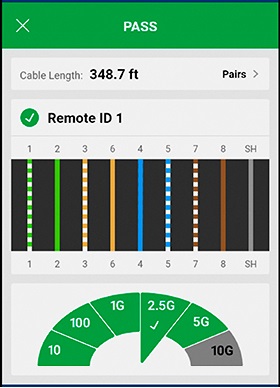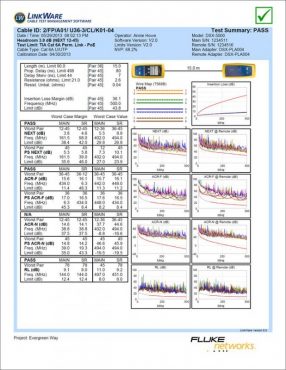Copper cable tester: Your options
Companies expect their twisted pair cabling to work flawlessly, but unfortunately that isn’t always the case. For a number of reasons, the network can go down causing huge problems for businesses. That’s where you, as an installer or network owner, will need to locate faults quickly. So, what are youre options when it comes to copper cable testers?
Copper cable testing can be broken down into three types of testers:
- Verification - Is this cable connected correctly? Also known as pair or continuity testers.
- Qualification - Can the cabling link support the desired network speed or technology?
- Certification - Does the installed cabling link comply with TIA/ISO standards?
Verification Testers

Why use Verification Testers?
These testers are great for finding connection and wire-pairing faults. They are fairly low cost and pretty easy to use. Just make sure you select one that uses Type B pattern for the pairs (Europe) and not the Type A (USA).
Recommended Verification Testers
We suggest you look at the Fluke Networks MicroScanner, NetAlly LinkSprinter and NetAlly LinkRunner AT.
Qualification Testers

These tools determine if the existing cabling link can support a specific service (such as 1Gig or 10Gig ethernet). The unit generates test signals in the same data frame format as the service you are testing for, and checks they get to the other end in a useable state.
A speed reading is reported. Some units also test for PoE capability for installing Access Points, Cameras, VoIP etc.
Pros and Cons of Qualification Testers
However, as they don't test to the TIA/ISO standards, they cannot certify the installation meets specifications such as Cat6A or Class F. Which means in most cases they are not sufficient for contract testing of new cabling installations. And they do not test the cable for services which are not ethernet based ie AV, Streaming Media, other signal types.
On the plus side, the price is significantly cheaper than a Certification tester.
Recommended Qualification Testers
We recommend the Fluke Networks LinkIQ.
Certification Testers

The use of Certification Testers
Certification tools are the only tools that provide “Pass” or “Fail” information against defined limits over set frequency ranges in accordance with the detailed test procedures of recognized standards such as ANSI/TIA/EIA-568 or the ISO/IEC standard 11801:2002.
The TIA standard defines levels of performance in categories such as Category 5, 6, 6A & 7. Whereas the ISO standard defines classes of performance such as Class D, Class E and Class F. Certification also requires that all test results taken in the field are stored and available in print or electronic format for future inspection (see example test report to the right - click to enlarge).
Recommended Certification Testers
For certification tester we recommend the Fluke Networks DSX Cable Analyzer due to their wide range support of all standards and component manufacturers, their ease of use, speed and quality.

